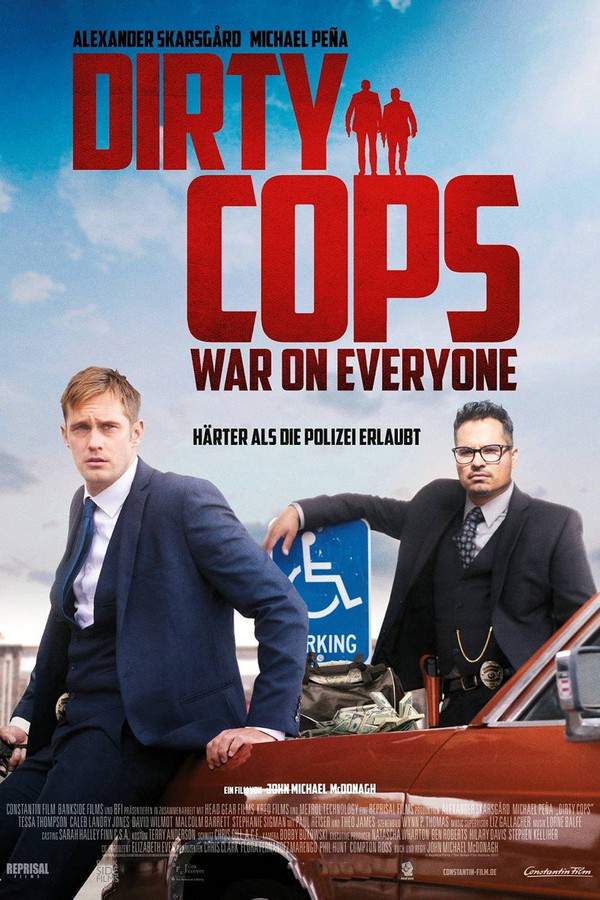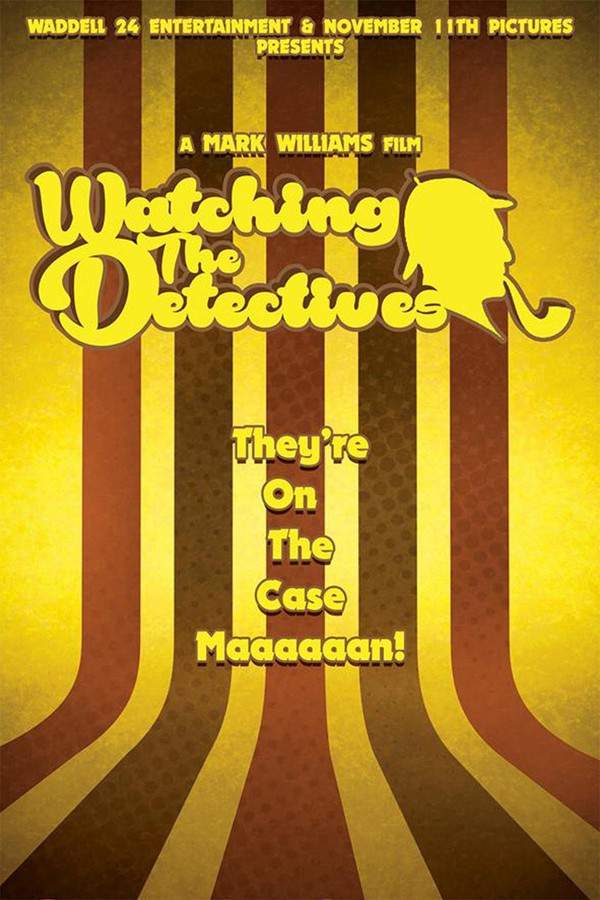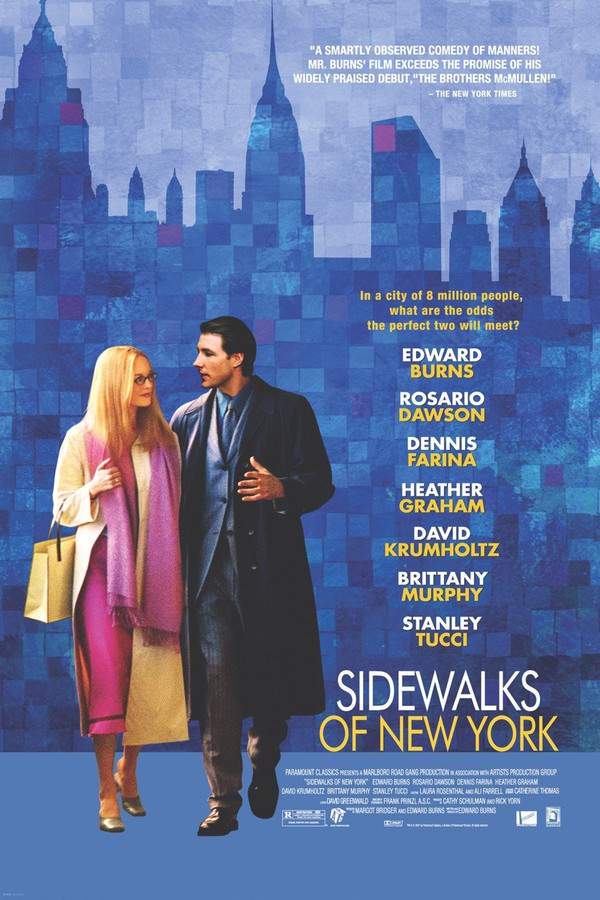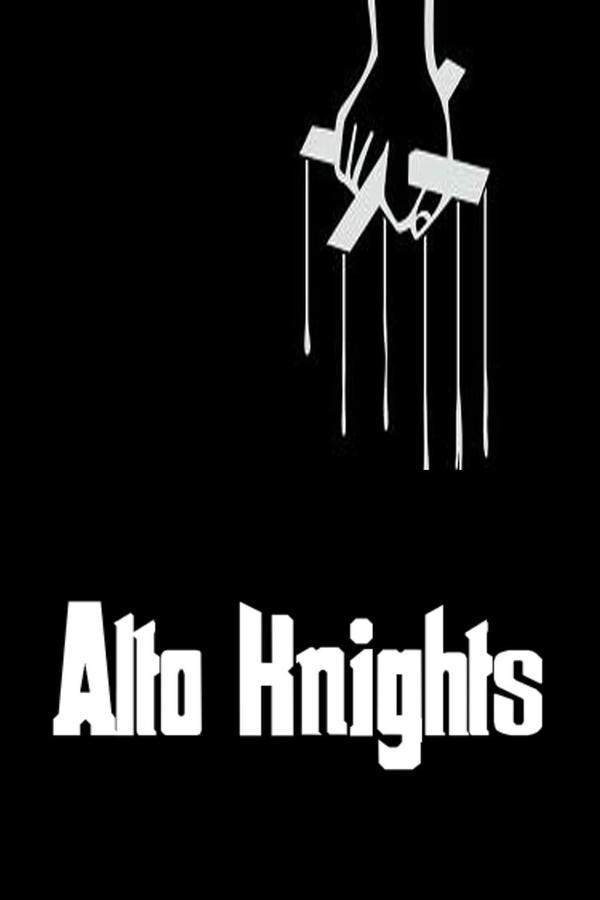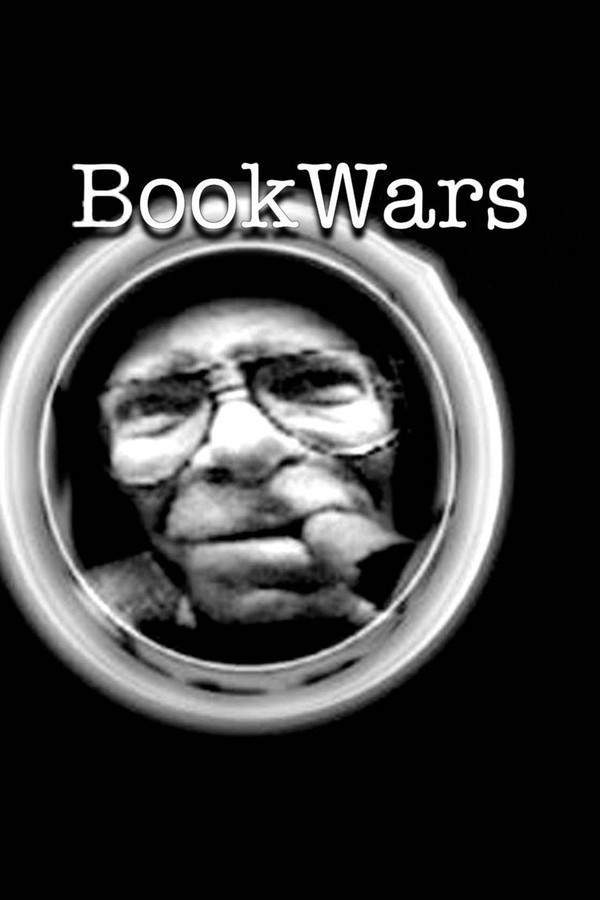
BookWars 2000
Directed by

Jason Rosette
Made by

Camerado
BookWars Plot Summary
Read the complete plot summary and ending explained for BookWars (2000). From turning points to emotional moments, uncover what really happened and why it matters.
As the desert highway sprawls ahead, the narrator—who is also the director—sets the stage for BookWars, a creative documentary that opts for an intimate and conversational style instead of conventional storytelling. With the camera trained on his face, he shares vivid anecdotes from his post-graduation escapades in New York City, driven by the urgent need to make rent. This determination leads him to sell his own books on the city streets.
Our journey takes us to West 4th Street in Greenwich Village, where we encounter a vibrant mix of street booksellers. Among them is Slick Rick Sherman, a semi-professional magician known for his dramatic flair; Al Mappo, the cartographer whose presence is hard to miss; Emil, a character shrouded in mystery and intrigue; and Pete Whitney, the self-entitled King of Booksellers, who also dabbles as a toad collector and collage artist. Each of these unique figures enriches our narrative tapestry.
Moving through their vibrant environments, BookWars juxtaposes these characters with a second cohort of street booksellers found on nearby 6th Avenue. This group, primarily composed of black and minority sellers, faces heightened scrutiny from law enforcement, often citing the ugly specter of racial profiling as the reason.
Notable among the 6th Avenue sellers are Marvin, who constantly dons his distinctive black hat, and Ron, a charismatic Jamaican whose quick wit and street savvy make him a formidable presence.
As we immerse ourselves in their world, BookWars takes us on a captivating chapter-by-chapter journey through the lives of street booksellers. We discover how they navigate their trade: from maximizing profits and managing challenging customers to sourcing fresh inventory and asserting their right to distribute literature in public spaces—all under the auspices of the First Amendment.
Through candid testimonies and honest reflections, we begin to appreciate this unique community where commerce intertwines with creativity and where the boundaries between art and trade blur. As the narrator’s tale unfolds, we find ourselves pulled into a realm that is both familiar and foreign—a place where books become vital tools for survival, avenues for self-expression, and bridges to connection, with the thrill of discovery juxtaposed against the urgency of a daily quest.
As the seasons change within BookWars, a cinematic odyssey emerges, interweaving themes of resilience and tenacity. Initially structured as a “year in the life,” the narrative covers several years, encapsulating the period from 1995 to 1999. As Winter blankets the city in a hush of snow, the booksellers adapt to the cold with varied strategies—Slick Rick swaps his books for a deck of cards and a magician’s hat, while Pete Whitney lovingly tends to his collection of cats. Meanwhile, the narrator embarks on a sun-drenched Western adventure in New Mexico.
Marv and Ron remain unwavering, braving the harsh winter conditions to sell their books along the lively 6th Avenue. The film captures these enterprising souls as they navigate the trash-strewn streets of Soho, seeking out hidden treasures including rare titles and prohibited literature. As Spring blooms, the booksellers reacquaint themselves with their usual spots, but a new reality unfolds: the street-level consequences of then-Mayor Rudolph Giuliani’s “Quality of Life” initiative.
The NYPD begins to enforce obscure sidewalk regulations that endanger the livelihoods of those who depend on public spaces. A new tax identification rule piles on bureaucratic hurdles, especially for marginalized or homeless vendors. To make matters worse, New York University drops substantial planters onto sidewalks, further isolating these unofficial entrepreneurs from their beloved readership. Tragically, on 6th Avenue, where black booksellers thrive, police begin to confiscate books, igniting collective outrage.
In response, the booksellers unite, forming an unlikely coalition to combat these intrusions into their ways of life. Some even endure long waits at police stations in hopes of retrieving their seized merchandise. Ron, particularly passionate, voices his frustration about the futility of the city’s efforts to suppress New Yorkers’ craving for literature.
As tensions mount and stakes rise, the street booksellers demonstrate remarkable resolve, standing firm against the Mayoral initiatives while making only minor concessions to their daily routines.
As BookWars builds towards its emotional climax, the narrator divulges a stirring realization: the unrelenting chaos enveloping the city has ignited a profound discontent within him. A compelling urge to step away from the drudgery of his street bookselling life begins to emerge, fueled by an overwhelming desire to reshape his professional journey. The catalyst? A fierce rainstorm that inundates the city—proving to be the final disruption needed to shake up his routine.
Emboldened by this newfound clarity, our protagonist starts selling off his remaining wares to fellow vendors. With freedom in the air, he sets off on an extraordinary cross-country adventure, inviting viewers to share in this thrilling journey. As we fasten our seatbelts for the ride, we find ourselves engrossed in the vast expanse of America’s landscapes filled with sights, sounds, and exhilarating experiences.
BookWars Timeline
Follow the complete movie timeline of BookWars (2000) with every major event in chronological order. Great for understanding complex plots and story progression.
The Introduction
The narrator, who also directs the film, sets the stage for *BookWars* as the camera focuses on his face. He shares vivid anecdotes from his life post-graduation, driven by the urgency to make rent while living in New York City.
Selling Books on the Streets
In his quest to pay his rent, the narrator begins selling his own books on the bustling streets of New York. This is where we first see the vibrant world of street booksellers emerging around him.
Encountering Street Booksellers
The narrator introduces us to a colorful mix of street booksellers on West 4th Street in Greenwich Village. This group includes Slick Rick, a semi-professional magician, and Al Mappo, the distinctive cartographer, who all contribute to a rich narrative tapestry.
The 6th Avenue Sellers
The documentary shifts focus to another group of street sellers along 6th Avenue, primarily consisting of black and minority vendors. Here, they face increased scrutiny from law enforcement, underscoring the challenges within their community.
Character Profiles
Among the sellers on 6th Avenue are Marvin, known for his distinctive black hat, and Ron, a witty Jamaican with street smarts. They add depth to the narrative, showcasing the resilience and creativity of street vendors.
Navigating the Trade
The documentary delves into the lives of street booksellers as they navigate the complexities of their trade. They must manage challenging customers, source new inventory, and defend their right to sell books in public spaces.
Seasonal Changes
As the seasons change, we observe the booksellers adapting to varying conditions. In winter, Slick Rick transitions from selling books to performing magic, while Pete Whitney cares for his cats, showcasing their resilience.
Giuliani's Initiatives
Spring arrives, bringing challenges as enforcement of Mayor Giuliani's 'Quality of Life' initiatives begins. The NYPD targets the street sellers, enforcing sidewalk regulations that threaten their livelihoods and forcing them to adapt.
Community Response
In the wake of increased police enforcement, the street booksellers band together to form an unlikely coalition. Their solidarity shines as they attempt to retrieve confiscated merchandise and stand firm against the city's efforts.
Rising Tensions
As pressures mount on the street vendors, the struggle against local regulations intensifies. The collective outrage becomes palpable, led by Ron, who expresses the futility of the city's increasingly restrictive practices.
Personal Reflections
As the narrator reflects on the chaos surrounding him, a profound dissatisfaction arises. He begins to feel the need to step away from the routine that has anchored him to street bookselling.
The Storm Catalyst
A fierce rainstorm envelops the city, serving as a pivotal moment for the narrator. The disruption prompts him to sell off his remaining inventory, symbolizing the end of one chapter in his life.
The Journey Begins
Now free from his street-selling obligations, the narrator embarks on a cross-country adventure. Viewers are invited to accompany him on this thrilling journey filled with new sights, sounds, and experiences.
A New Chapter
The adventure serves as a transformative experience for the narrator, prompting deep personal revelations and a redefined purpose. This journey ultimately reflects the broader themes of resilience and creativity found throughout *BookWars*.
BookWars Characters
Explore all characters from BookWars (2000). Get detailed profiles with their roles, arcs, and key relationships explained.
Slick Rick Sherman
Slick Rick Sherman is introduced as a semi-professional magician, infusing drama and flair into the vibrant landscape of street bookselling. His charisma and unique approach to sales make him a standout figure within the community. He adapts creatively to challenges, using his skills to both entertain and sell.
Pete Whitney
Self-proclaimed King of Booksellers, Pete Whitney showcases a whimsical charm as he balances his book-selling with a love for cat-collecting and collage art. His multifaceted personality reflects the creative spirit of the community, and he epitomizes the fusion of art and trade that defines the lives of these sellers.
Ron
A charismatic Jamaican bookseller, Ron navigates the challenges of street selling with quick wit and street smarts. His passion for literature and tenacity in the face of adversity make him a crucial member of the bookseller community. He stands out for his vocal advocacy, particularly regarding the impact of law enforcement on marginalized vendors.
Marvin
Marvin is a distinctive street bookseller known for his trademark black hat. His determination to make a living as a vendor reflects the struggles of many in the community as they adapt to changing regulations. He symbolizes the resilience found within this tight-knit group as they continue to pursue their passion for literature.
BookWars Settings
Learn where and when BookWars (2000) takes place. Explore the film’s settings, era, and how they shape the narrative.
Time period
1995-1999
The documentary covers a pivotal period in New York City from 1995 to 1999, highlighting significant social and political changes. This era saw the implementation of Mayor Rudolph Giuliani's 'Quality of Life' initiative, which impacted many marginalized communities, especially street vendors. As seasons change, the film captures how these booksellers adapt to both societal challenges and shifts in their personal lives.
Location
New York City, Greenwich Village, 6th Avenue, Soho, New Mexico
The film takes place primarily in New York City, particularly in vibrant neighborhoods like Greenwich Village and along 6th Avenue, known for its rich culture and street life. These bustling streets feature a community of street booksellers who contribute to the city's literary tapestry, showcasing the intersection of commerce and creativity. Scenes also unfold in the picturesque landscapes of New Mexico, symbolizing a journey of self-discovery beyond the urban confines.
BookWars Themes
Discover the main themes in BookWars (2000). Analyze the deeper meanings, emotional layers, and social commentary behind the film.
📚
Literature
Literature emerges as a central theme, illustrating its power as a tool for self-expression and resistance. Street booksellers navigate the complexities of their trade, asserting their right to share knowledge despite systemic challenges. The film underscores the role of books in fostering community and connection, revealing how they serve as vital lifelines for survival.
✊
Resistance
The theme of resistance is prevalent throughout the narrative, showcasing how street booksellers unite against oppressive regulations imposed by the city. Their collective action highlights a deep-seated determination to protect their livelihoods and advocate for their rights. The filmmakers capture the spirit of resilience in a community that stands firm against adversity.
🌧️
Change
Change is a recurring theme, as the protagonist grapples with the unpredictability of life as a street seller. A transformative rainstorm acts as a catalyst, pushing him to rethink his path and embrace the possibility of adventure. This theme resonates with the ebb and flow of the seasons, mirroring the booksellers' own journeys towards self-discovery and growth.
Movies with Similar Twists and Themes
Uncover films that echo the narrative beats, emotional arcs, or dramatic twists of the one you're exploring. These recommendations are handpicked based on story depth, thematic resonance, and spoiler-worthy moments — perfect for fans who crave more of the same intrigue.
Featured on this page

What's After the Movie?
Not sure whether to stay after the credits? Find out!
Explore Our Movie Platform
New Movie Releases (2025)
Famous Movie Actors
Top Film Production Studios
Movie Plot Summaries & Endings
Major Movie Awards & Winners
Best Concert Films & Music Documentaries
© 2025 What's After the Movie. All rights reserved.


